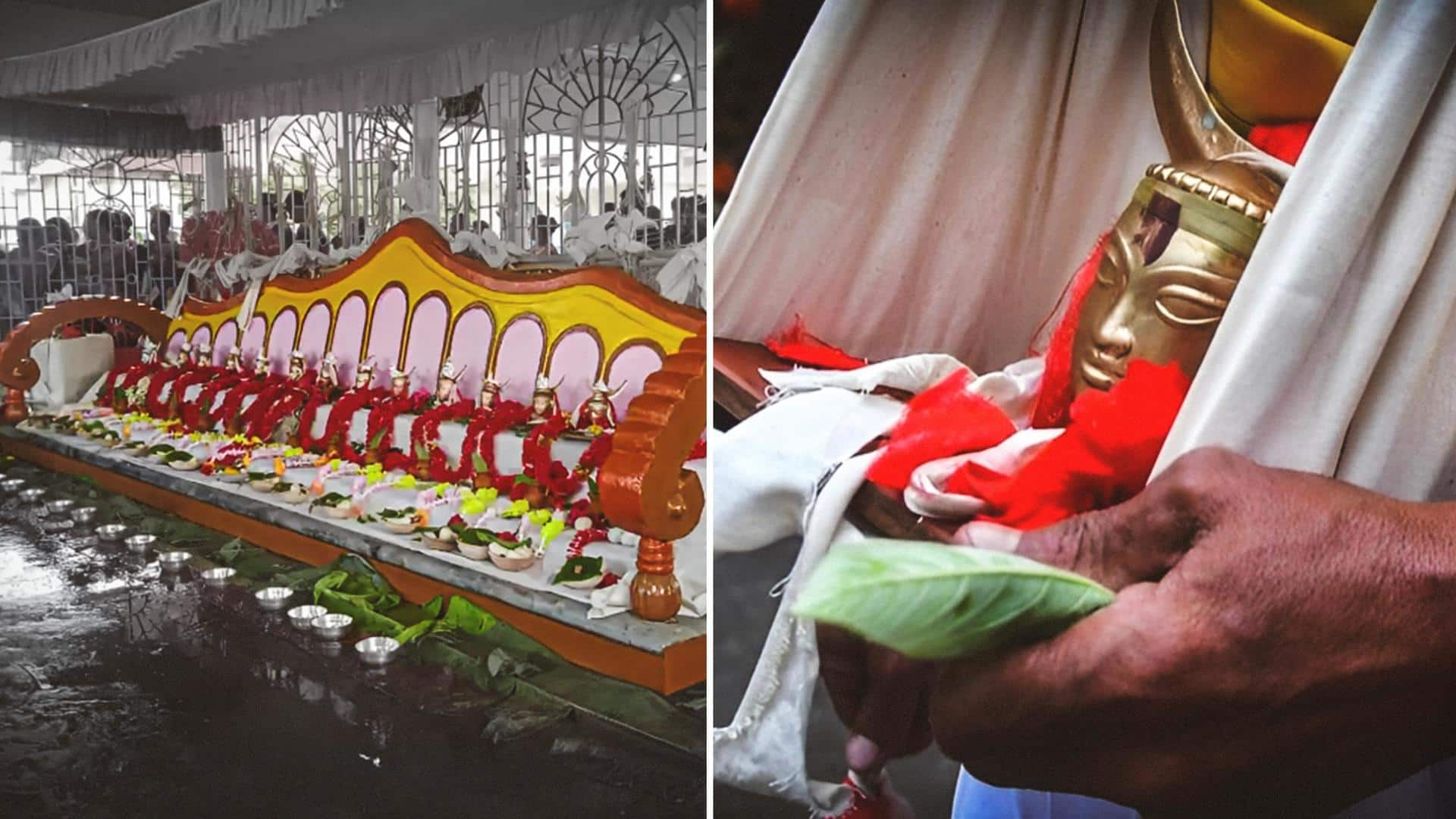
Tripura's 'Festival of 14 Gods' Kharchi Puja begins today
What's the story
Preparations are underway for Kharchi Puja in Tripura's Agartala. Kharchi Puja, one of the most anticipated and popular festivals in the state begins today at the Chaturdas Devata Temple, the temple premises of fourteen gods. The Puja, also called the Festival of 14 Gods is performed as a time to honor Chaturdasa Devata, the ancestor god of the Tripuri people.
Significance
Significance of the festival
The word Kharchi is derived from two Tripuri words -'khar' or kharta meaning sin and 'chi' or si meaning cleaning. It essentially means cleaning the sins of the people or the kingdom. The Kharchi Puja is traditionally performed after 15 days of Ambu bachi which represents the Mother Goddess's or the Mother Earth's menstrual cycle, according to history.
Significance 2
The amalgamation of menstruation and culture
Menstruation is seen as an unholy event in Tripuri culture. The ground is therefore considered to become impure following mother earth's menstruation during Ambu bachi. The purpose of the Kharchi Puja is to cleanse Mother Earth's postmenstrual uncleanness and wash away the sins of the people in the land. It is carried out for seven days in a row.
Timing
Date and timing of the Puja
Kharchi Puja is observed every year on the Shukla Ashtami day, which falls on the eighth day of the lunar month of Ashadha. Depending on the lunar calendar, the festival's exact dates change every year. However, the main rituals often take place on the last day of the celebrations, which last for a full week. This year the festival is on till July 2.
Event
What happens during the Kharchi Puja?
The fourteen deities are carried by royal priest Chantai to the river Saidra on the day of the puja, where they are bathed in holy water before being brought back to the temple. The deities are once more set in the temple, embellished with different flowers, traditional attires, and ornaments, and the deities' frontal horns are painted with vermillion.
Celebration
How is the event celebrated?
Celebrations begin with the recitation of sacred and religious hymns and mantras, invoking the deities for their blessings. Devotees assemble to watch and take part in this big festival from various locations in Tripura and neighboring states. Various musicians and impassioned devotees lead the procession, fostering a vivacious and energizing festive atmosphere. Additionally, folk dances and music are also performed by local artists.